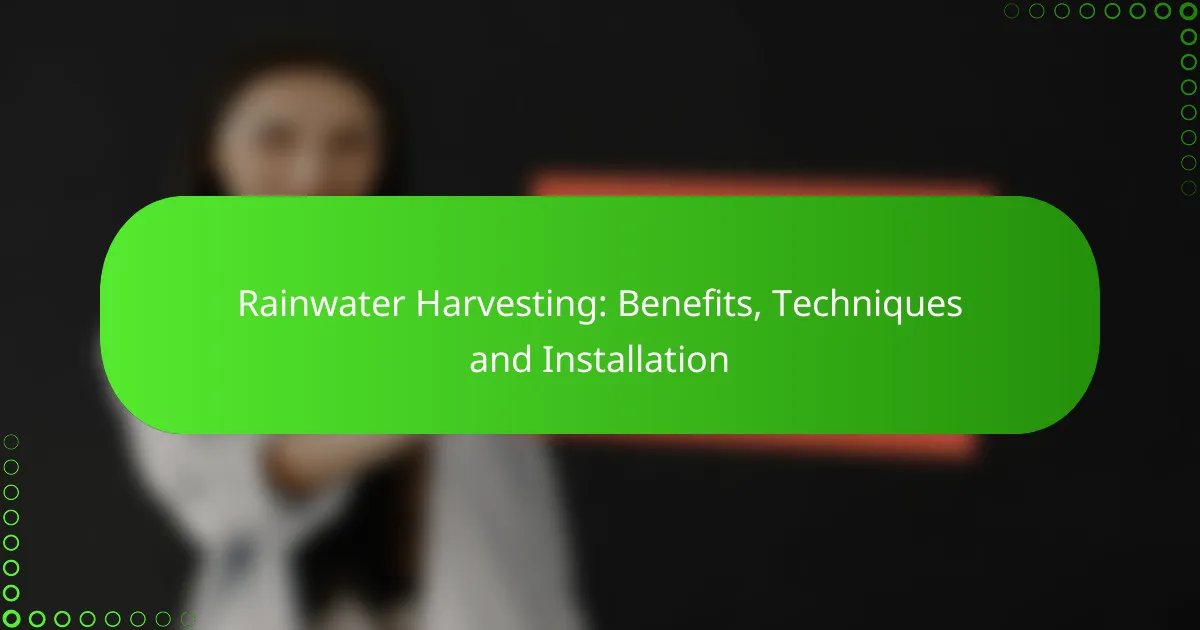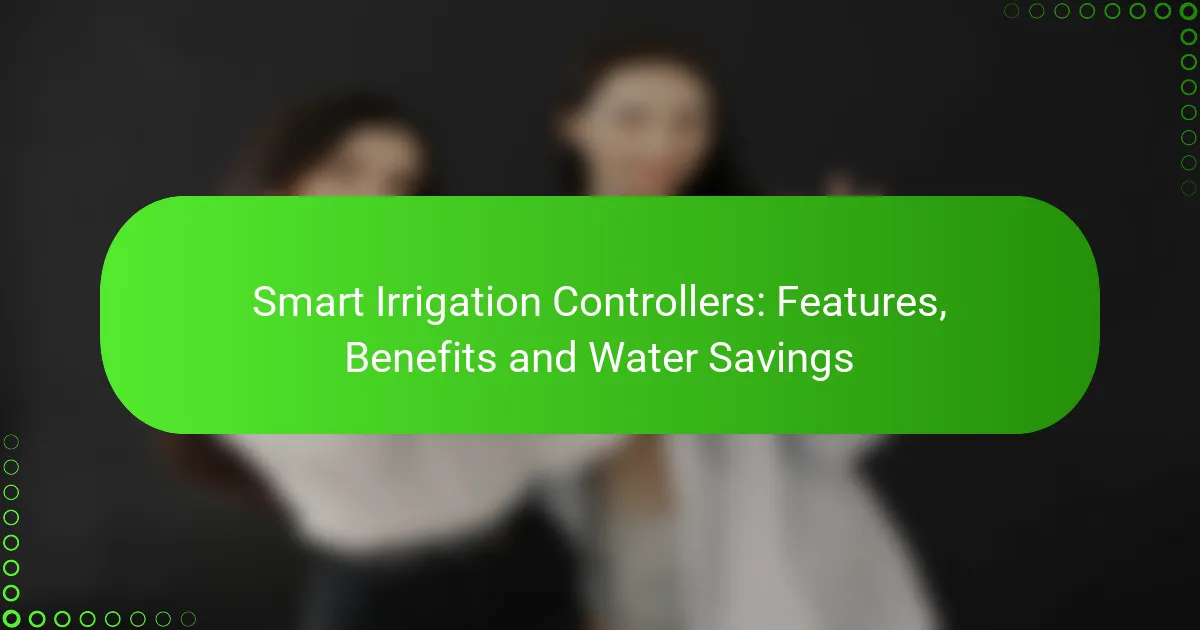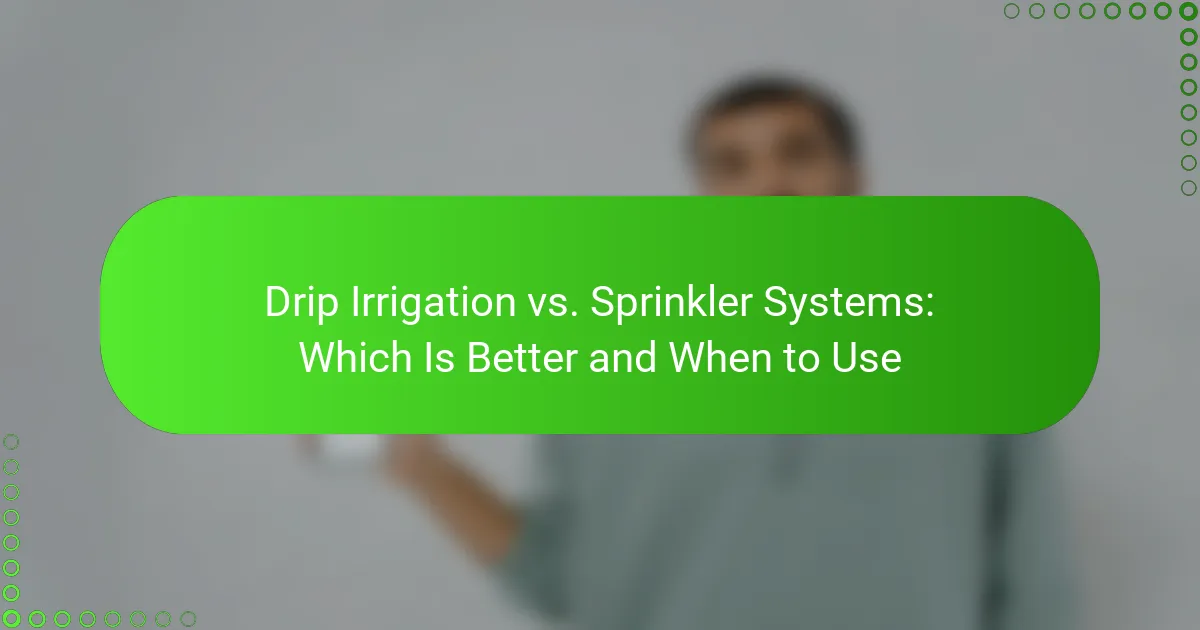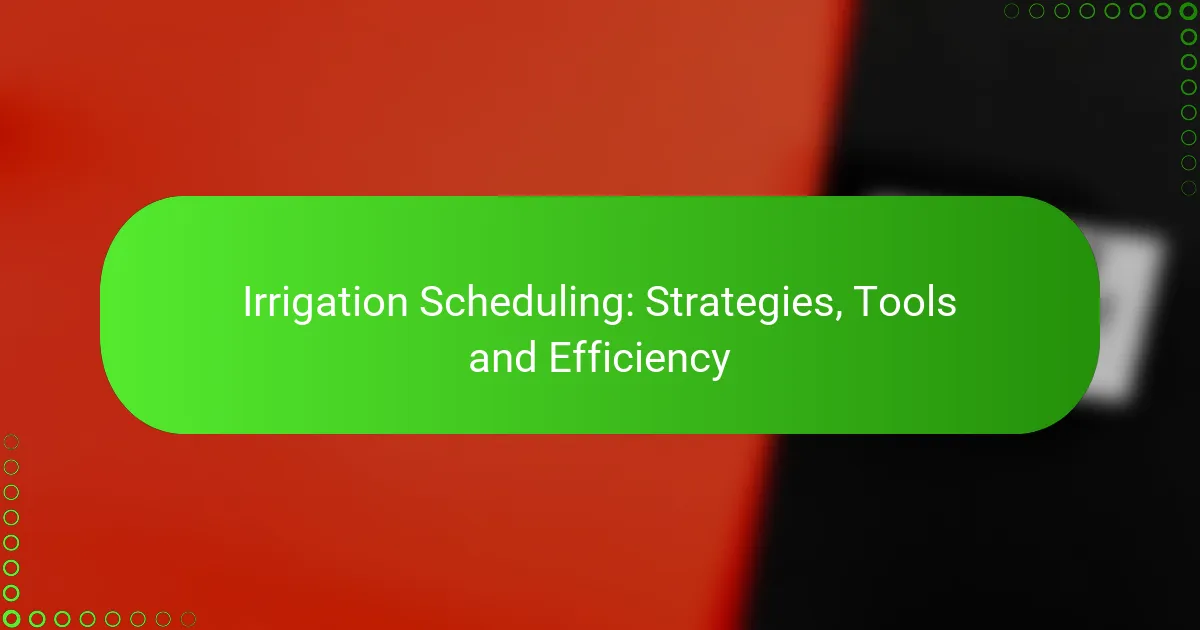Rainwater harvesting is an effective strategy for enhancing water conservation and sustainability, particularly in regions facing water scarcity. By capturing and utilizing rainwater, individuals and businesses can significantly reduce their dependence on municipal water supplies while enjoying cost savings. Various techniques can be employed to collect and store rainwater, making it adaptable to different environments and needs. Proper installation and maintenance of these systems ensure their efficiency and longevity, supporting both residential and agricultural applications.

What are the benefits of rainwater harvesting in South Africa?
Rainwater harvesting in South Africa offers numerous advantages, including enhanced water conservation, significant cost savings, and improved environmental sustainability. By capturing and utilizing rainwater, households and businesses can reduce their reliance on municipal water supplies and mitigate the impacts of water scarcity.
Water conservation
Rainwater harvesting plays a crucial role in water conservation by collecting and storing precipitation for later use. This practice helps alleviate pressure on local water sources, especially during dry seasons when water demand peaks. By using harvested rainwater for irrigation, flushing toilets, and other non-potable applications, users can significantly reduce their overall water consumption.
Cost savings
Implementing a rainwater harvesting system can lead to substantial cost savings on water bills. In South Africa, where water tariffs can be high, utilizing rainwater for various household needs can lower monthly expenses. Additionally, the initial investment in a rainwater collection system often pays off within a few years through reduced utility costs.
Reduced flooding
Rainwater harvesting systems can help mitigate flooding by capturing runoff during heavy rains. By directing rainwater into storage tanks instead of allowing it to flow into storm drains, these systems reduce the volume of water that contributes to urban flooding. This not only protects properties but also minimizes the risk of erosion and water pollution in local waterways.
Improved water quality
Harvested rainwater is typically free from many of the contaminants found in municipal water supplies, making it a cleaner alternative for non-potable uses. With proper filtration and treatment, rainwater can be used for irrigation or even potable purposes, depending on local regulations. This can lead to healthier plants and gardens, as well as reduced chemical runoff into the environment.
Environmental sustainability
Rainwater harvesting promotes environmental sustainability by reducing the demand for treated water and lowering the energy required for water distribution. By utilizing a natural resource, this practice helps conserve energy and reduces greenhouse gas emissions associated with water treatment processes. Furthermore, it supports biodiversity by maintaining local aquifers and ecosystems.

What techniques are used for rainwater harvesting?
Rainwater harvesting utilizes various techniques to efficiently collect and store rainwater for later use. These methods can be tailored to different environments and needs, ensuring effective water management.
Rooftop collection
Rooftop collection is one of the most common techniques for rainwater harvesting, where rainwater is captured from building rooftops. The water is directed into gutters and downspouts, leading to storage tanks or cisterns. This method is effective in urban areas where impervious surfaces dominate.
When implementing rooftop collection, ensure that the roofing materials are safe for water collection, as some materials may leach harmful substances. Regular maintenance of gutters and storage systems is essential to prevent contamination and ensure optimal performance.
Surface runoff collection
Surface runoff collection involves capturing rainwater that flows over land surfaces, such as driveways and fields. This technique can be particularly useful in agricultural settings, where water can be directed into ponds or reservoirs for irrigation. It helps in managing excess water and reducing erosion.
To effectively collect surface runoff, consider constructing swales or ditches that guide water to designated storage areas. Be mindful of potential pollutants that may be present in runoff, and implement filtration systems to improve water quality before storage.
Rain gardens
Rain gardens are designed to absorb rainwater from impervious surfaces, allowing it to infiltrate the ground. These gardens are typically planted with native vegetation that thrives in wet conditions, helping to filter pollutants and recharge groundwater. They are an attractive and functional addition to landscapes.
When designing a rain garden, select plants that are suited to your local climate and soil conditions. Ensure the garden is located in a low-lying area where water naturally collects, and consider the size based on the amount of runoff you expect to manage.
Permeable pavements
Permeable pavements are surfaces that allow water to pass through, reducing runoff and promoting groundwater recharge. This technique is often used in driveways, parking lots, and walkways, where traditional materials would create impermeable barriers.
When choosing permeable pavement options, consider materials such as porous asphalt, permeable concrete, or interlocking pavers. Regular maintenance is crucial to prevent clogging and ensure continued water infiltration, which can help maintain local water tables and reduce flooding risks.

How is rainwater harvesting installed in residential areas?
Rainwater harvesting in residential areas involves collecting and storing rainwater for various uses, such as irrigation and household needs. The installation process typically includes designing a system tailored to the specific property, following a series of steps to set it up, and ensuring ongoing maintenance for optimal performance.
System design
The design of a rainwater harvesting system begins with assessing the roof area, rainfall patterns, and intended usage of the harvested water. Key components include gutters, downspouts, a storage tank, and a filtration system. It’s essential to choose materials that comply with local regulations and ensure the system’s efficiency.
For example, a typical residential system might utilize a 1,000 to 5,000-liter tank, depending on the household’s water needs and available space. The design should also consider the integration of the system with existing plumbing to maximize utility.
Installation steps
Installing a rainwater harvesting system involves several key steps. First, install gutters and downspouts to direct rainwater from the roof to the storage tank. Next, set up the tank in a location that is easily accessible for maintenance and away from direct sunlight to prevent algae growth.
After the tank is in place, connect it to the plumbing system and install a filtration system to ensure the water is clean. Finally, test the system to ensure all components are functioning correctly and that water is being collected efficiently.
Maintenance requirements
Regular maintenance is crucial for the longevity and efficiency of a rainwater harvesting system. This includes cleaning gutters and filters to prevent blockages and checking the storage tank for leaks or contamination. It’s advisable to inspect the system at least twice a year, especially before and after the rainy season.
Additionally, consider using a first-flush diverter to ensure that the initial runoff, which may contain debris, does not enter the storage tank. Keeping a maintenance log can help track any issues and ensure timely repairs, enhancing the system’s reliability.

What regulations govern rainwater harvesting in South Africa?
In South Africa, rainwater harvesting is regulated by a combination of national guidelines and local bylaws that ensure sustainable and safe practices. These regulations vary by province and municipality, influencing the design, installation, and maintenance of rainwater systems.
National guidelines
The national framework for rainwater harvesting in South Africa is primarily guided by the National Water Act and the National Environmental Management Act. These laws emphasize the importance of water conservation and sustainable use, encouraging the collection and use of rainwater while protecting water resources.
Additionally, the Department of Water and Sanitation provides guidelines that outline best practices for rainwater harvesting systems, including design specifications and maintenance recommendations. Compliance with these guidelines is essential for ensuring the safety and efficiency of rainwater systems.
Local bylaws
Local bylaws can significantly impact rainwater harvesting practices, as municipalities may have specific requirements regarding system installation and water quality standards. For instance, some areas may mandate filtration systems to ensure that harvested rainwater is safe for non-potable uses, such as irrigation or toilet flushing.
Before installing a rainwater harvesting system, it is crucial to check with local authorities for any permits or inspections required. Engaging with local water management offices can provide clarity on the specific regulations applicable to your area, helping to avoid potential fines or legal issues.

How to choose the right rainwater harvesting system?
Choosing the right rainwater harvesting system involves assessing your water needs, available space, and budget. Consider factors such as system size, storage options, and cost to ensure the system meets your specific requirements.
System size
The size of your rainwater harvesting system should match your water consumption and the area of your roof that collects rain. A larger roof area typically allows for more water collection, which can be beneficial for households with higher water usage.
As a general guideline, consider that a 100 square meter roof can collect approximately 100,000 liters of rainwater annually in areas with moderate rainfall. This estimate can help you determine the system size that fits your needs.
Storage options
Storage options for rainwater can vary from above-ground tanks to underground cisterns. Above-ground tanks are often easier to install and maintain, while underground systems can save space and reduce evaporation.
When selecting a storage option, consider factors such as local climate, available space, and the intended use of the harvested water. For instance, if you plan to use the water for irrigation, a larger tank may be necessary to accommodate seasonal variations in rainfall.
Cost considerations
The cost of a rainwater harvesting system can vary widely based on size, materials, and installation complexity. Basic systems may start in the low hundreds of USD, while more advanced setups can reach several thousand USD.
When budgeting, include costs for components such as gutters, downspouts, filters, and storage tanks. Additionally, consider potential savings on water bills, which can offset initial expenses over time.










